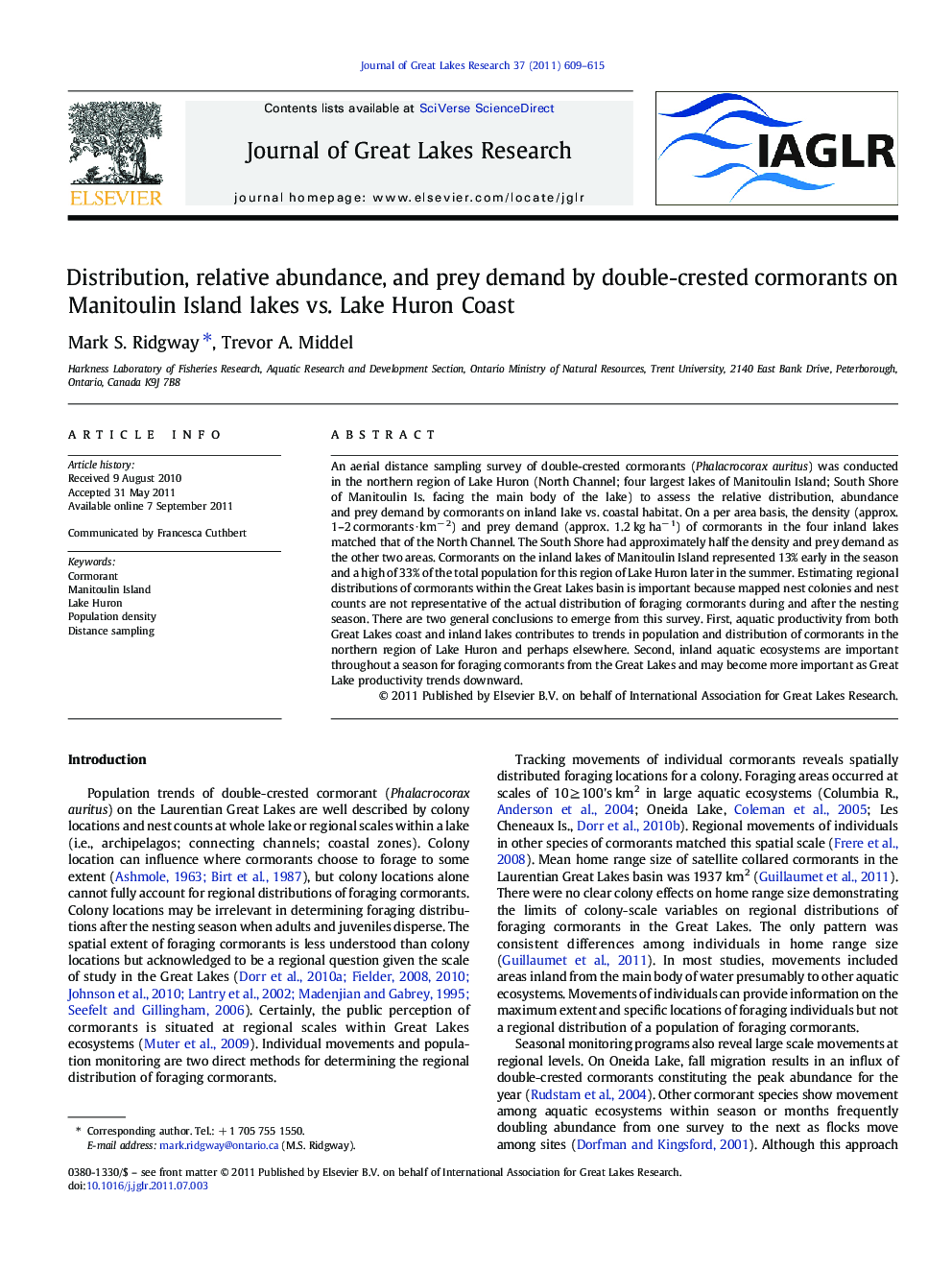| Article ID | Journal | Published Year | Pages | File Type |
|---|---|---|---|---|
| 4398679 | Journal of Great Lakes Research | 2011 | 7 Pages |
An aerial distance sampling survey of double-crested cormorants (Phalacrocorax auritus) was conducted in the northern region of Lake Huron (North Channel; four largest lakes of Manitoulin Island; South Shore of Manitoulin Is. facing the main body of the lake) to assess the relative distribution, abundance and prey demand by cormorants on inland lake vs. coastal habitat. On a per area basis, the density (approx. 1–2 cormorants ∙ km− 2) and prey demand (approx. 1.2 kg ha− 1) of cormorants in the four inland lakes matched that of the North Channel. The South Shore had approximately half the density and prey demand as the other two areas. Cormorants on the inland lakes of Manitoulin Island represented 13% early in the season and a high of 33% of the total population for this region of Lake Huron later in the summer. Estimating regional distributions of cormorants within the Great Lakes basin is important because mapped nest colonies and nest counts are not representative of the actual distribution of foraging cormorants during and after the nesting season. There are two general conclusions to emerge from this survey. First, aquatic productivity from both Great Lakes coast and inland lakes contributes to trends in population and distribution of cormorants in the northern region of Lake Huron and perhaps elsewhere. Second, inland aquatic ecosystems are important throughout a season for foraging cormorants from the Great Lakes and may become more important as Great Lake productivity trends downward.
► We estimated cormorant abundance and prey demand for northern Lake Huron region. ► Density was similar for inland lakes and the North Channel and lower on open coast. ► Cormorant prey demand was 1.2 kg/ha for both North Channel and inland lakes. ► Inland lakes help sustain coastal Great Lake populations of cormorants. ► Cormorant use of inland lakes will increase with lower productivity on Great Lakes.
